| Umělec 2004/2 >> LET’S BE PART OF THE SYSTEM! | Просмотр всех номеров | ||||||||||||
|
|||||||||||||
LET’S BE PART OF THE SYSTEM!Umělec 2004/201.02.2004 Redas Diržys | en cs |
|||||||||||||
|
Manifesto #3
Politics 1. Society is hierarchical. 2. Society is made of groups of people that have different rights and different social opportunities, even if theoretically they should be equal. 3. The elite of society has the majority of rights and regulates the common affairs of society. 4. The elite consists of several groups: elected representatives, the economic and the criminal elite. 5. Normally, all the groups are related. One member of elite can represent few or all groups. 6. The elite determines the rules of public behavior. 7. The elite legitimises its existence with the help of social manipulations. 8. Social manipulations often are defined as brainwashing. 9. The main goal of brainwashing is to hide the difference between the ideal (theoretical) social model and the reality. 10. Members of the elite enjoy the economic prosperity that is inaccessible for others. The elite knows that their names will be mentioned in the history books. 11. To achieve its goals successfully, the elite needs a society that is generally indifferent and does not question the rules of social behavior. 12. Only this type of society could be easily turned into cannon-fodder. 13. To have independent political thinking does not mean to be a member of a political party. It means the publicly demonstrated responsibility for everything that happens around. Redas Diržys & Jonas Valatkevičius, 1998 Manifesto #4 The Pop star The star is a herald of contemporary society. The star is a person performing in public space. The star plays a very important social role (star is usually related to politics, criminals or pop culture). The star is born, lives and dies in the space of mass media. The star lives in the press, on TV, radio or Internet. The star has a body of mass media image. The star is a virtual person. Very few people saw not his/her image, but a real person. The star lives in the space of mass media and obeys its laws. The star desperately believes that he/she could conquer the mass media and turn it into his/her instrument. The star is always accompanied by his/her public-relations officer because of this reason. The star is wrong, mass media – omnipotent, it can’t be conquered. The star performs several very important functions. The star brings fortune to those who created him/her. The star compensates the desire of ordinary people for the ideal. The star is worshiped by the ordinary members of society. By learning about the life of a star, the normal person fights the boredom of every day life. Let’s love our stars! Redas Diržys & Jonas Valatkevičius, 1998 From Guggenheim to Tatlin and back again By Redas Diržys The first impression of Bilina’s gallery space led me to make immediate parallels with the names in the title. The more I think about it the more it fits as a perfect symbol of my recent research in artistic fields: how to be part of the system and how to rebel at the same time. And of course it is very symptomatic that these two aspects have come together at a time when Eastern European countries are entering the EU and at the place where the real border is (Bilina is on the German-Czech border). Strong and Barely Built System(s) This was an opportunity to see two different kinds of art histories: the Soviet and the Western. (Now I am even starting to see huge differences between Western European and American versions of art history and so on). The most exciting thing – some parts were absolutely different. Especially the art of the 20th century as depicted in Soviet art history. Only parts of Western art were related to communist ideology and were more or less comparable to the paradigms of Socialist Realism. On the other hand, in the East only movements in Russian and other Eastern European art activities could be found, which had a specific impact on the Western art in Western art histories. “Did Russia have a history? It never fought with England!...” – Bob Budd; July, 2002, Flensburg, Germany. It’s now becoming more and more evident that art history has only one mission – to defend some big collections of rich museums and personas that would lose their treasures if the system failed. The entire industry of star making was created to organize a strictly functional price-value system. A very important part of the system is the strategy of showing a few stars in a context of well prepared and proportionally weighed “filling”. What is the concept of “filling” and how did it happen that Eastern European countries contributed the vast majority to it? First of all, behind the Iron Curtain every scrap of information about Western movements (in the mainstream of course: rock, pop music, abstract expressionism, pop and minimal art) were treated like a kind of ultimate freedom. Even the formal abstract picture was a radical gesture in the Soviet society. So after the collapse of the system all the vanguard artists and activists flooded to the West and they soon realized how obsolete and naive they were in the context of the Western theoretical jugglery. Only a few lucky souls from the communist camp succeed in building careers, because of the clever strategy of applying a Soviet style according to Western stereotypes filling already existing folders. Another step was the reorganization of the national systems into a pro-Western one, with the help of ideology instead of a historical survey. A great job was done with the help of networks of international foundations. They really created a well-organized system, provided good taste, politically correct and undistinguished products, perfect for filling any big show. One nice local story is a perfect universal example. The current head of a prestigious art center in Lithuania made himself the so-called first installation art work in Lithuania, so that he could include it into his theoretical diploma work while he was still a student at the National Art Academy in the late eighties. “How is it that Marcel Duchamp was the greatest artist during the whole century?” – Waldemar Stoffel (Stefan Cramer), July, 2001, Flensburg, Germany. The Strengths and Weaknesses of Bureaucracy What are the basic features of the ordinary art bureaucrat? He/she always emphasizes the role and importance of the institution he/she belongs to, always presents a well-elaborated mission and vision of the art institution, Clearly articulates the task of international collaboration of institutions. Knows the definitions well and usually uses them to hide their meaning, Has good taste, Is politically correct, Always mentions cocktail parties held for limited numbers of people and drops the names of big stars he/she knows, The bureaucrat maintains the hierarchy in the system. The bureaucrat believes that the institution protects him/her from responsibility. There is one very effective weapon against bureaucracy: use sincerity, honesty and the depiction of doubt, but still use the same clearly expressed bureaucratic forms of social appearance. If a bureaucrat begins to establish his/her own mistakes and doubts, the system will be in danger. Image and Manipulation: the Tools of Democracy How can we keep the system in a democratic society where the absolute force of the State is hidden away? Good taste, stylistic cannons, established lifestyles – thousand of images created every second in regular sequence repeated every day in different forms: radio, TV, press, art, advertising…The lack of taste, the taste of peasants… all of these is outside the mainstream…is outside the sequence of images – qualitative images. The copyrighted image – this is the greatest invention of democratic society. It sounds like a mechanism to protect the creative individual, but in fact it works for something else entirely. Who benefits from it? Museums, advertising companies, publishing houses, galleries….they are protected first. The product of art as it appears usually in mass media – is just information. At least the stars who get big money from copyrights usually represents something other than themselves only. Revolution: the Image of the Image Killed The French Revolution contributed the image of killing; the Russian the killed image (cubo-futuristic experiments to destroy language, the image etc); revolution was influenced by Situationists in France and abroad in 1968, no image. But every revolution sets an enormous flood of images. Growing larger every time. So, what are the most pressing tasks of the revolutionary approach? There is only one way: steal the images created, misuse them, drill them into the walls, grounds and ceilings of the institutions who feed the spectators… (see Drilling Manifesto). The producing of the image is still necessary to get into the system, as long as drilling is the act of destroying! Dictatorship: the Rise of Imagination In the case of dictatorship, the sequence of the images and their production are significantly reduced to one that is very clear, narrative and ideologically proven, without any ambivalence. It should be extremely clear where the real power is located. The individual imagination tends to fill the consciousness with fantasies, illusions, dreams. They give power to those who have a rich imagination. If one brings it to society, he/she will be immediately punished. They empower the collective imagination based on fear. Major modernist artistic movements based on imagination resembled autocratic regimes and were usually the possession of a few dogmatists. So, it seems that classical artists having a conservative sense of imagination feel much better in the atmosphere of dictatorship and oppression. Even artists who appear in society could be characterized as autocratic – with the simple wish to connect the whole the universe into a merely esthetic and stylistically well-organized unit. It is so nice to tell people where to go to cry and when is time to die… The Drilling Manifesto 1. Cut the very first picture from a newspaper and enlarge it until the diameter of the smallest white dot reaches at least 0.5 mm. Glue this image to a solid board and drill each white dot with a bit that fits the size of the dot. Remember, every image has to have appeared in the press for you to drill it. 2. The fewer the number of bits you use, the clearer is your world view. 3. The movements made while inserting a bit into its chamber remind you of loading a gun. Use increasingly bigger drills! 4. Enjoy the ergonomic grip of the drill; it perfectly fits the shape of your hand: people put lots of effort into harmonizing form and content. 5. Drilling decreases matter. Prepare the space for spiritual hegemony! 6. Do not stop drilling, even if you feel the liberation of your consciousness. Release your mind, and you will soon notice that your heart beats within the frequency of the instrument’s vibration. However, you will reach the highest degree of unification only when you identify with this frequency. During the mytholog ical era, this was the way in which a centaur, sphinx and other creatures of the unified soul were formed. 7. Now the only thing you need to do is to explain to society your endless desire to drill. April 5, 2001, Alytus. Comparisons & Differences The text tends to rethink personal experience while preparing the show in Bilina’s (Czech Republic) city hall tower as part of the city celebration of country’s official entering into EU. Is there some difference between the beauty of a growing star and the cleverly crafted smile by charming dictator? The question aroused while inhabiting in the same space of a 1 meter wide smile of Lukashenko and the set of my friend’s photos from different periods of his career as it appeared in the newspapers. And as much I was dealing with the images – I was drilling them so it took a very long time – as much I’ve realized that there is one unifying principle in that – the principle of being on the opposite side of the truth… Somehow after the invention of photography, cinematography and video. The task of catching the image as quickly as possible was the main one during a long decades…Truth seems something what is first cached with the camera. The mastership of the camera man is based on that. Mass media, representing truth, was entirely concerned with that kind of truthful image. The truthful seems to be that, which is to be shot or taken (depending on the media)as if by an accident and the same time reveals the slight signs of sincerity: an innocent smile, naďve astonishment, the slight blowing of summer wind that can take care of long hours of standing in front of the fan etc. Are there Some more Paths Remaining? Much less spectacular is the strategy of the camera man/artist to wait for one truthful moment’s entire life and then to capture truth as it has been prejudiced long before… Buddha? But there is a much more important the act of waiting and meditation in that case… Or desperately to catch everything, what is happening before your consciousness starts to conceive it, or simply before it switches on. I find both ways present in the act of drilling the images: an intuitive random choice of the image for drilling – that’s the first way; and long meditation while drilling all the white dots of the image’s grid – the second one. What is amazing is that always after a long time of drilling you’re starting to conceive hidden meanings of the image…the same as if you’d never conceived a single still from a movie – it is only the row that is conceivable. Furthermore it is not the image that is not important, but the newspaper, the magazine…; it isn’t not the artwork, but the museum, the gallery…; It is not the person, but the state. That is probably the price for the speed. Once in The States during a presentation of my works a kid asked me: Is that computer work that you did or just drilling? No, that’s just drilling, – I reassured him. There is not a big difference between the birth and death of a star in mass media. Sometimes one even replaces another. For example Cambodian dictator Pol Pot succeeds in dying twice in newspapers all over the world: once as a bad guy, who died but nobody is aware is the body of him. The second time was the next day when the same newspapers confirmed that the body really is his. It happened April 1998. His evilness was very truthful on the first day, but got suspicious on the next one…the suspicion grew with the number of the countries bombed by Americans just as the tendency to leave one guilty bastard strengthens it. And the press from all over the world waits for their deaths…announced probably again twice; once simply as death, and then as the body’s identification… Another example: my own simulated death in Lithuanian newspapers was the first widespread image of my artistic message… Or Edi Rama, the mayor of Tirana, Albania. He was caught by a snapshot in the very moment of ecstasy while holding a smooth-tongued speech for his election campaign. He appeared in newspapers almost in the same shape as Pol Pot had 5 years before. But nobody cares – Pol Pot is already forgotten… a cliché that can be used again. - What are you doing there? - That’s a barricade. - But we should go through to deliver the products. - But we have permission to build the barricade… - We also have permission to drive through downtown! - Yes, but the barricade is there exactly to prevent you from doing that… (the excerpt from a conversation while performing The Barricade as part of official city celebration in Kaunas, Lithuania, on May 17th, 2003) I always thought that the word, barricade, signifies something against power of the government and is connected with the rebel. But now it could even be a means of entertainment, it could be commissioned for an official state celebration. “True poetry begins with the first pavement stone thrown at the police!” – an aphorism by Guy Debord. Sometimes I can not understand what the art of social critique is about. It was originally a beloved subject of major shows organized in former communist countries during the last decade of the last century. I was trying to investigate the logic of those artworks. Is there some reason why all socially engaged art in the papers looks so similar? It seems that there are some rules dictating what social critique should look like. And ,of course, I was trying to work on a social critique as well, but I never was accepted into the official new wave shows or to the cultural pages. Rather, I started to appear in criminal pages, front pages and even in the sports section. What was very interesting – the pages were much more readable among the people (not just from the art world, but in general). And even when Umělec a few years ago published one of my pieces, the pages seem visually very inconvenient for the art paper… The last thought I’ve generated in the Lithuanian newspapers was: The artist is for a government like electricity: if they (the authorities) will deal in a clever way, then there will be arranged light, communication and comfort. But if someone takes the wires into his bare hands, he’ll get a shock—and possibly a strong one. And of course, it is much nicer to rebel against stupid a government than to serve to the clever one. But for practical reasons we tend to choose the second option. But somebody even succeeded in getting a salary as a permanent rebel against the system. May 16, 2004, Alytus May 9th, 2004, Alytus Dear Amiel Grumberg, I’ve just read the text that you wrote in Beaux-Arts magazine – thank you very much for sending it – and first I would like to say that I highly respect your opinions about the Eastern European contemporary art scene. Of course, it is a pity that you didn’t find it necessary to incorporate my thoughts. But that is quite understandable, given the whole the context of your writing… I would say that it is the typically arrogant and self-satisfied position of critics/curators from the western art system. I found a big divergence in your position and thoughts from our first emails. You were somehow trying to combine the point of view of three personalities (a curator, an artist living there and a person of the same nationality living abroad). In case you still did not realize who the people are that you invited to “collaborate” from Lithuania – I can tell you that they all represent the same institution… and even keeping in mind that you had invited more than three people. It seems from your text that you’ve chosen the simplest way to represent the art situation of several other Eastern European countries as well: the Czech Republic, Hungary, Poland and Slovenia… it’s sad, but you’re still stacked with the same clichés you intended to kill when starting to write the article. I quote from your first letter: I guess it would be more efficient and honest to invite French readers to give up a large number of clichés when talking about Vilnius, Prague, Budapest, or Tallinn. And more, in your article you’ve written that you had organized a competition for young art activists – several from each country and from which you selected the best…if you had mentioned that in the first letter – you would definitely never have gotten any answer – at least from me… By the way, it would be appropriate that I let you to know that the letter I’m writing to you right now is destined to be published... your possible answer could be used as well… Therefore your article is very important to me and very timely – it fits perfectly into my recent concept called filling. I am glad that your text and techniques used to collect and assemble material depicts the mechanisms of manipulation very clearly. (You can find more on my concept of filling in the attached text for my latest show in the Czech Republic) It’s funny but your approach to the whole art context looks a lot like that of the Soviet Union. The ideologists in that former country elaborated on the concept of friendship of nations (or international friendship) and were very optimistic about that. And they always mentioned a few big names, like Lenin, Stalin, Pravda and world revolution as something what let dreams to come true. Now you’re referring to the names, Soros, Flash Art, Art Context with that same euphoria … and the methods for making generalizations and conclusions are the same… coming back to your latest letter: I look forward for future collaboration, now that the borders are “officially” fading away. Let’s see what it will bring in the art context – so, my answer is: that’s the truth – the official borders are really fading away, but the fact reveals a much bigger problem – the real borders are represented by the kind of mentality I’ve just met in your approach. So, the changes in the art context will appear after the of second wave of remaining borders fades away — the real ones. What about our future collaboration – I would like not to receive from you any e-mails neither calls for at least nearest half of the year (according to Tolia Osmolovsky’s thoughts that is enough time to change something in yourself – probably I’ll turn myself into the same bastard as you). Please don’t take it personally – it’s addressed more towards the system as represented by you at the present moment. And finally, one very sincere question: could you make an attempt to announce that my name has nothing to do with your article, in the next issue of the Beaux-Arts magazine, please? I wish you all the best in your not-so-easy way of waiting for changes in the art context. Sincerely, Redas Diržys The Expert for North of Eastern Europe at ZCCA-Libušin From: Martin Zet, To:Redas Diržys Sent: Sunday, May 09, 2004 Dear Redas, Very good, I really like your new, passionate face. I think it is exactly what the sexless and emotionless easy official world needs. Keep it up – you have nothing to loose unless you want to become the same subordinate shit….. Martin P.S. When reading your letter I remembered Robert Morgan’s thesis: “There is no Art without the Art Discourse.” Of course the thought is in the sense of “Western Art Discourse,” and even narrowed to “NY Art Discourse,” (his lecture at Omi), that I also passionately disagreed with. But when I said it to him—he wasn’t strict at all, he on the other hand was quite nice and playful… Then I realized that these “professional” people are using the words, pronouncing the thesis and the theories much more easily and lighter than I was. Maybe that comes from practice, which they learn at school (at least in the U.S.): rhetoric—you get the theme and you must speak about it for a certain period of time. When you shut up – that’s it. No consequences. Nothing changes. In Czechoslovakia we didn’t have anything like that at school. My problem is that I sometimes (luckily not very often) read it and I sometimes try to understand it; I sometimes try to reveal the mechanisms and purposes leading to those formulations. But the correct approach to this kind of “correct” text could be better as “who cares?” To whom is it important? From: Redas Diržys, To: Martin ZET Sent: Sunday, May 09, 2004 Dear Martin, …What about losing – on the contrary – in this case I want to become the same subordinate shit, I can lose the opportunity to do it in a very easy way....but that is a bigger problem, not for a shit, but for those who are shitting… Best Redas From: Martin Zet, To: Redas Diržys Sent: Monday, May 10, 2004 …Let’s enjoy every moment before we become shits... Martin Manifesto #5 Politics reloaded Normally people don’t know the real meaning of politics. They have only theoretical knowledge of how society should work. No one lets people see the real situation. People are fooled by the twisted image of political life in mass media. Mass media works hand-in-hand with politicians. Mass media is business, politics is business, business is business. Business is not supposed to respect moral values – either you kill, or you should die. There are no moral values in politics because moral values are strict – there’s only black or white. Morality does not accept compromises – there are only different levels of sin. Politics is based on compromise between different groups of influence. Thus morality and politics have nothing to do. There are only two ways to deal with politics. One way is to forget everything you know about it and be free. The other way is to get elected and mutate. DO YOU REALLY WANT TO BE A POLITICIAN? [Jonas Valatkevičius, 2004] Manifesto #6 Political art We all loved anti-political art once — art that questioned the status quo we all have to live with. We thought that socially engaged art was the most useful. It was our social mission. We thought that in this way we perform our duties to society. To criticize, to be critical of everything that is related to government, business, mass media. The question is: why were government, business and mass media always so eager to give us money to create this type of art? Why did they give us money to produce just another mockery of what was dearest to them? Why do they still love this type of art so much? Maybe they have the same naďve idea that we all share: this is the way I perform my duties to society. No-way. We were the ones who were always naďve. We’ve been used by governments, business and mass media, who legitimized their existence with the help of our art: look, we are happy with those who criticize our values and the way we behave. Government, business, mass media: what do they really mean when they talk to us? Let the people see their true face! NO MORE ANTI-POLITICAL ART! NO MORE HELP TO GOVERNMENTS, BUSINESSES AND MASS MEDIA ARE WHO WANT TO USE ART AS A SHIELD. [Jonas Valatkevičius, 2004]
01.02.2004
Рекомендуемые статьи
|
|||||||||||||
|
04.02.2020 10:17
Letošní 50. ročník Art Basel přilákal celkem 93 000 návštěvníků a sběratelů z 80 zemí světa. 290 prémiových galerií představilo umělecká díla od počátku 20. století až po současnost. Hlavní sektor přehlídky, tradičně v prvním patře výstavního prostoru, představil 232 předních galerií z celého světa nabízející umění nejvyšší kvality. Veletrh ukázal vzestupný trend prodeje prostřednictvím galerií jak soukromým sbírkám, tak i institucím. Kromě hlavního veletrhu stály za návštěvu i ty přidružené: Volta, Liste a Photo Basel, k tomu doprovodné programy a výstavy v místních institucích, které kvalitou daleko přesahují hranice města tj. Kunsthalle Basel, Kunstmuseum, Tinguely muzeum nebo Fondation Beyeler.
|







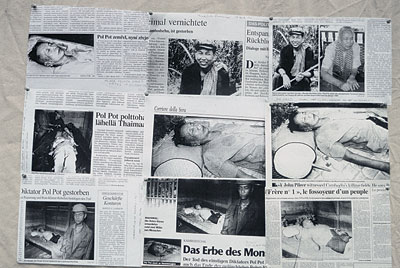





























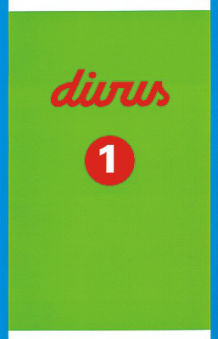




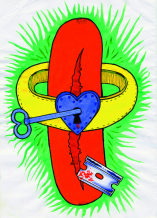

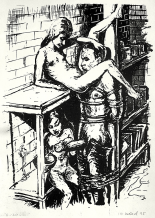
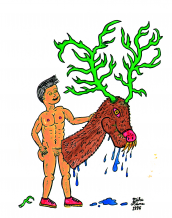


 We Are Rising National Gallery For You! Go to Kyjov by Krásná Lípa no.37.
We Are Rising National Gallery For You! Go to Kyjov by Krásná Lípa no.37.
Комментарии
Статья не была прокомментированаДобавить новый комментарий